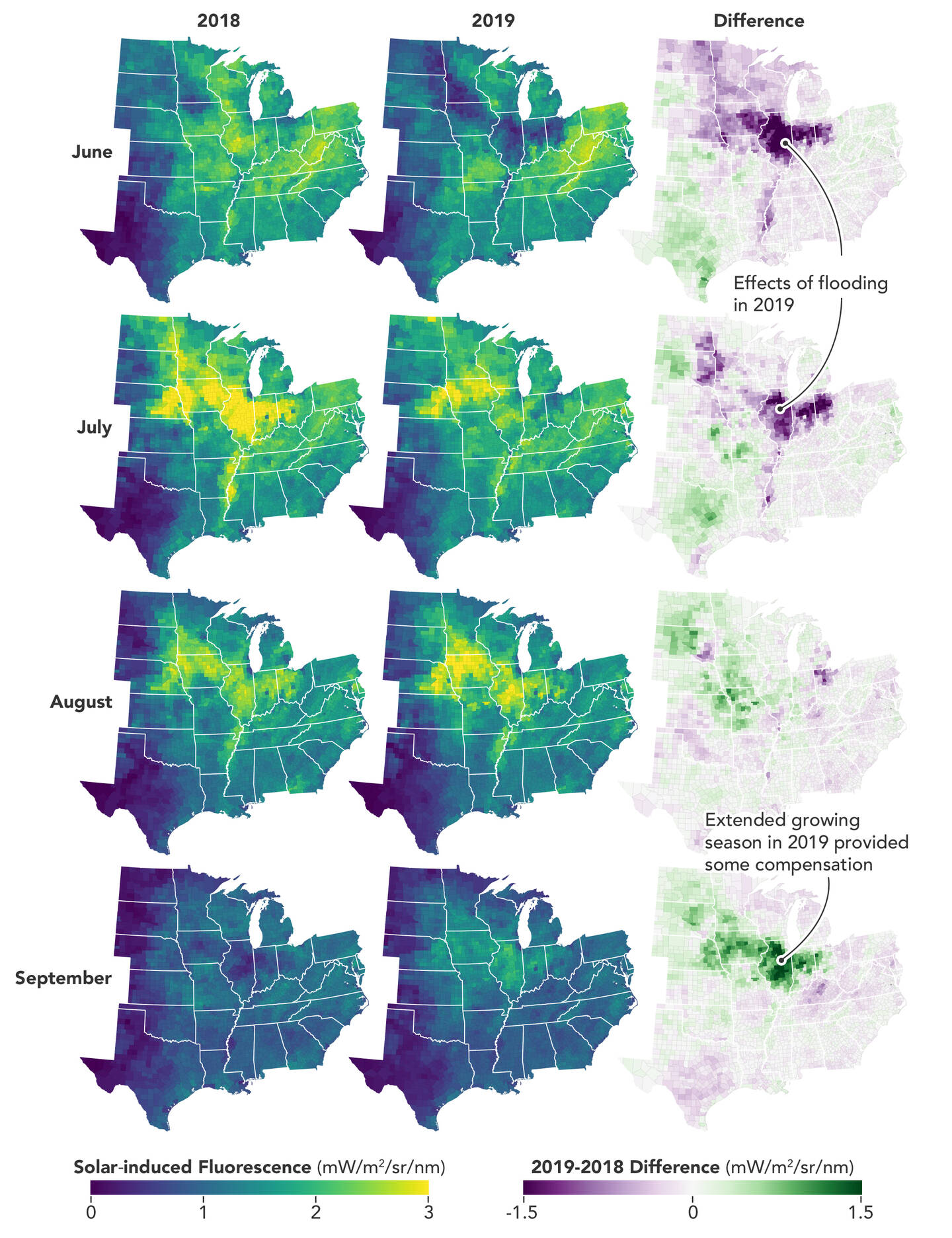
Tropospheric Monitoring Instrument (TROPOMI) on ESA’s Sentinel-5P satellite. NASA Earth Observatory images by Joshua Stevens, using data courtesy of Y. Yin et al. (2020). Edited from story by Kathryn Hansen.
It sounds like science fiction, but plants in the midwestern United States and all over the world literally glow during the growing season. The glow can’t be seen with the naked eye. Scientists have detected this signal using satellites. When a plant performs photosynthesis—absorbing sunlight to convert carbon dioxide and water into food—its chlorophyll will emit a faint glow: solar-induced fluorescence, or SIF. Scientists can use the glow to assess plant productivity. The maps show how the SIF signal evolved across the Midwest during a typical growing season (2018) and during the record precipitation and floods of 2019. The third column shows the difference between the two years. June 2018–September 2019.
